Vol. 2, No. 2 (December 2024)
Flourish and Grow
Richard S. Bloomfield and Mekhalaa Muraly
All figures in Canadian dollars unless otherwise noted.
“As an Indigenous artist, everything you create is Indigenous art…It doesn’t have to be feathers and eagles and all that. It can be UFOs, plants, whatever you want…Everybody is always asking, what are you doing for National Indigenous People’s Day on June 21? It’s a holiday…But [I ask,] what are you doing the day before and the day after?…Indigenous solidarity doesn’t just start on the day that had been given to it. It’s year-round.”
— Mikaila Stevens, Mi’kmaq artist and founder of Flourish and Grow[1]
Introduction
On August 26, 2022, Mikaila Stevens, founder, Flourish and Grow, London, Ontario, Canada, was eagerly awaiting the unveiling of her latest handmade beadwork line—“The Anxiety Collection.” Flourish and Grow was a sole proprietorship retailing handmade fine art, jewelry, and apparel that conveyed a narrative of Stevens’ Indigenous Mi’kmaq culture and values. As Stevens reflected on the journey that had brought her to this point—a journey marked with passion and perseverance to create meaningful artwork that resonated with her buyers—a wave of mixed emotions washed over her. Stevens realized she desperately needed to boost Flourish and Grow’s sales and operational capacity if she was to sustain full-time employment with her sole proprietorship during the coming 2023–24 year and going forward. Stevens urgently needed to develop and implement a comprehensive marketing strategy for Flourish and Grow to broaden market reach and improve sales. How could she enhance her brand’s value, build stronger customer relationships, and solidify her identity as an Indigenous Mi’kmaq artist? Having explored the Indigenous art space over the last few years, Stevens wondered how to address key aspects of her marketing strategy—product, pricing, promotion, and distribution—to remain competitive and expand her market reach while running a one-person business. Since the new fiscal year was only three months away, she knew she had to act fast to develop and implement a marketing plan to gain the revenue needed to support her full-time employment and maintain financial obligations in the coming year so that she could focus on her passion of creating screen printings and beadwork as a way to connect with her culture.[2] Where should she start?
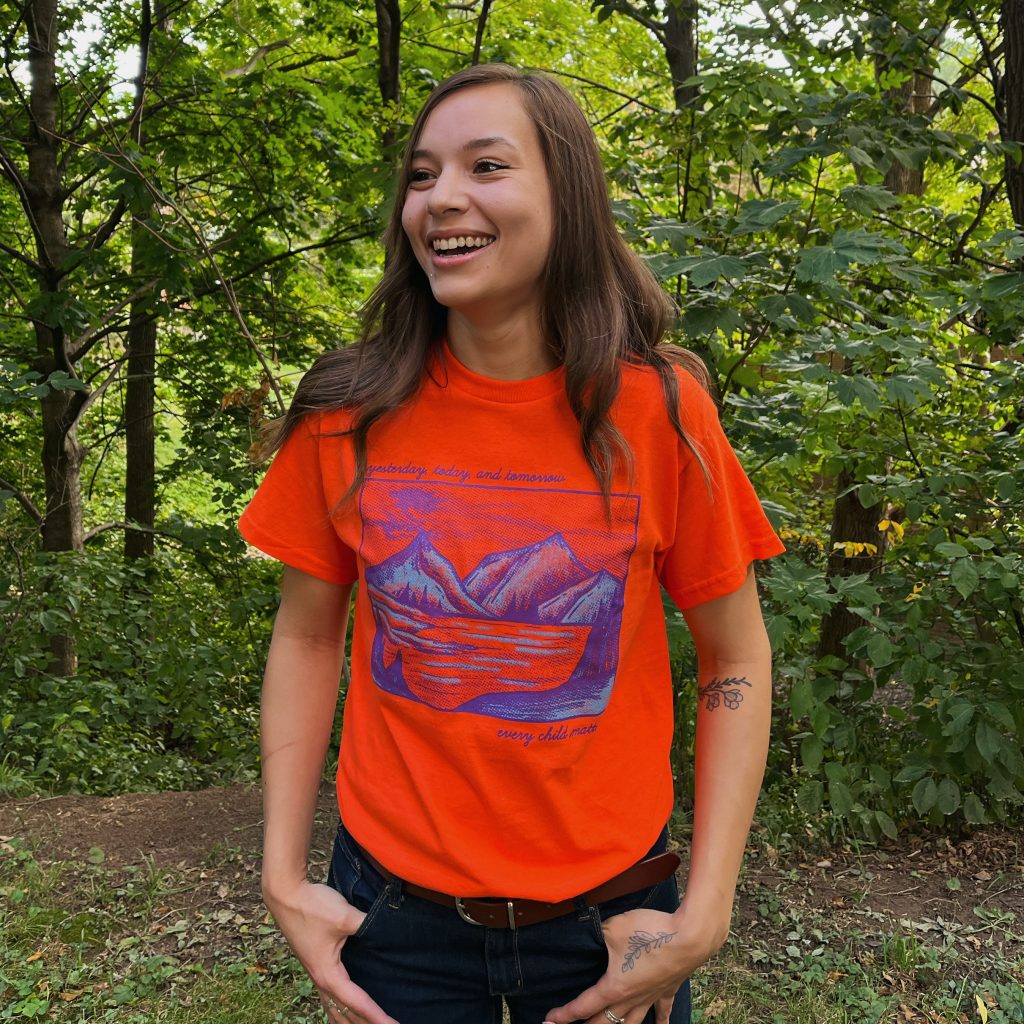
Credit: © Mikaila Stevens. All rights reserved. Used with permission.
History
Flourish and Grow
Flourish and Grow was a sole proprietorship based in London, Ontario, founded by Mikaila Stevens in 2019. It primarily engaged in selling contemporary-style beadwork, screen-printed apparel, and fine art to customers who appreciated the value of specially curated collections of handmade products. Using a combination of bold colours and design elements taken from nature, Flourish and Grow created one-of-a-kind art pieces designed to convey a narrative about Stevens’ Indigenous Mi’kmaq culture and values. Increased market demand for handcrafted apparel and jewelry allowed the company to expand its presence through both online and pop-up market sales across Canada and online sales to the United States within three years of operations.
Mikaila Stevens
As Stevens explored her Mi’kmaq ancestry, she created unique and introspective pieces, including apparel, beaded accessories, and fine art. Stevens forged connections with her customers through her expressive and personal creations. Her art connected with people who had weathered life’s diverse experiences and emotions by encapsulating feelings of grief, heartbreak, and anxiety, to name a few. Each piece carried a story and resonated with individuals who traversed similar paths. See Exhibit 1 – Examples of Popular Product Lines.
In the early stages of Flourish and Grow, Stevens primarily engaged in screen printing and apparel design. Screen printing was a process in which ink was pressed through a mesh screen with a blade or squeegee, transferring the ink onto a base material (film, liner), except in areas where a stencil was placed to prevent ink from contacting the material, thereby creating unique designs. As time progressed, Stevens delved into the more intricate art of beadwork. When the COVID-19 pandemic struck, forcing her to spend extended periods of time at home, she was temporarily unable to continue screen printing due to unavailability of materials. Instead, she immersed herself in her newfound passion for beading and dedicated countless hours to honing her skills, allowing her creativity to thrive. The solitude of her home became a sanctuary for Stevens to explore her artistry, which resulted in exquisite collections of beadworks. Despite not having a background in business management, in the preceding year, she had found alternative sources of funding to expand her business and obtained government grants to finance larger-scale fine art projects.
Industry and Competitors
Industry
Research indicated that the North American handicrafts market was expected to achieve a valuation of $531.2 billion (US) by the year 2028, with a compound annual growth rate (CAGR) of 9.9% for the five-year period from 2022 to 2028.[3] The North American handicrafts market, which included hand-printed textiles and handmade jewelry, was driven by several factors. A surge in the disposable incomes of households, and growing travel and tourism activities in the United States and Canada enticed foreign tourists to spend a significant amount of money purchasing local souvenirs and handmade products. Moreover, the rise of online retailing and the abundance of e-commerce platforms greatly enhanced the availability of handmade products, benefiting both producers and consumers. Consumers had the convenience of purchasing handicraft items with a simple tap on their smartphones, including no contact and hassle-free doorstep delivery. Similarly, handicraft artists used social media promotions as a direct gateway to their target markets, effectively streamlining their reach to potential customers.[4]
Social trends in the jewelry market indicated a preference among young working professionals and millennials for beaded jewelry over traditional jewelry. The volatile prices of gold and silver also played a significant role in driving the global demand for beaded products. Furthermore, the growing fashion consciousness of consumers and the increasing popularity of piercings have contributed to the ongoing evolution of innovative and ornamental beaded creations.[5]
Competitors
Local Independent Artists
Independent local artists and crafters, along with family-owned shops, engaged in the sale of traditional artwork that reflected their culture and heritage. Their business models involved custom manufacturing based on orders, offering limited edition collections at premium prices, and a supply chain process characterized by longer lead times. Their target customer base consisted of individuals who sought a personal connection with both the artist and the culture, and who valued the purchase of specially curated products, even at higher price points. Local artists actively engaged in the Indigenous art space, which included participating in local art committees and online platforms, aiming to establish their identities.
Claire’s
The American retailer Claire’s specialized in the sale of accessories, jewelry, and toys, targeting the teen girl and young women demographics. The company, established in 1961 and headquartered in Chicago, operated under two brand names: Claire’s and ICING. Claire’s had a substantial global physical presence with 2,300 retail stores in North America and Europe, along with 190 ICING stores in North America.[6] In addition to selling their products in retail stores such as Walmart, Toys “R” Us, and French department store Galeries Lafayette, the company also maintains an e-commerce platform for its online sales. The brand’s unique corporate strategy—the concession model[7]—allowed it to collaborate with retailers and maintain control over pricing and merchandising, as retailers were not required to purchase inventory directly from Claire’s.[8] Furthermore, Claire’s reputation for quality ear piercings allowed the company to leverage its growing brand image to optimize its integrated operations.[9]
Ardene
The family-owned fashion retailer Ardene was based in Quebec, Canada. Established in the early 1980s, Ardene initially focused on selling fashion-forward accessories and jewelry at affordable prices. Over time, the company expanded its product offering to include clothing, shoes, and brand collaborations. The company opened approximately 350 stores across Canada, the United States, and the Middle East, and it employed nearly 3,500 people across North America.[10] The brand’s e-commerce portal—Ardene.com—was launched in 2012, and its online shopping app was launched in 2019, which helped the company’s product development and geographic expansion.[11] Additionally, the company’s charitable organization, Ardene Foundation, contributed to enhancing the brand’s reputation as a sustainable entity by organizing group volunteering, in-store events, and fundraising initiatives.[12]
Customers
Flourish and Grow’s customers primarily consisted of 24- to 35-year-old women across Canada and the United States with disposable incomes. They were knowledgeable about the art space, particularly Indigenous art, and therefore appreciated the worth of handmade apparel and jewelry. Moreover, they perceived higher-end streetwear fashion as highly valuable and were willing to pay premium prices for the exceptional quality of handcrafted products. Customer purchasing patterns show that the majority of purchases were split between beadwork and screen-printed apparel, with some customers also buying fine art. Lower shipping rates allowed Flourish and Grow to further increase its online sales and expand its customer base in the United States. Stevens was unsure whether her strategy going forward should specifically target U.S. customers or Canadian customers.
Product
The product range of Flourish and Grow mainly included screen-printed apparel, handmade beadwork, and other forms of fine art that conveyed a narrative of Stevens’ Indigenous Mi’kmaq culture and values. These unique creations were perceived by customers as highly valuable because they were limited-edition and not mass-produced. The company’s products encapsulated stories and fostered a deep connection between the customer, the artist, and the culture they represented. Furthermore, the handmade, locally sourced, locally produced artwork aligned with sustainability practices, adding to their appeal. Since both screen-printed apparel and beadwork were handcrafted product lines, the production process was both labour-intensive and time-consuming. For instance, while screen printing apparel required physical work at the shop, beadwork entailed long hours of focused and intricate craftsmanship at home. Since Stevens solely managed all aspects of the business, including product creation, marketing, and shipping, she knew it was important for her to think of ways to develop products effectively and efficiently. She was uncertain if she should prioritize products with the highest contribution margins or those that were the most popular. This dilemma involved making strategic decisions about which products should receive greater emphasis in terms of production and sales. Stevens also wanted to begin taking a wage for the hard work that went into making her products, and she hoped to pay herself an hourly rate of $20. See Exhibit 2 – Product Costing Information and Exhibit 3 – Sales Proportion Information for detailed information on the price, cost, and related sales distribution percentages for these product categories.
Price
Among the three types of products, it was the screen-printed apparel that posed the greatest challenge for pricing and promoting. It was crucial to ensure that the price aligned with the product’s superior quality and exclusivity, as well as the artist’s dedication, while accurately conveying these features to customers. This task was particularly challenging for online sales, as customers highly valued the tactile experience of purchasing apparel on-site. To combat this difficulty, Stevens implemented various strategies, such as sharing product pictures and offering free samples to market her one-of-a-kind pieces and justify their prices. However, these steps often led to increased operating expenses. Since Stevens handled the screen-printed apparel in-house instead of outsourcing it, the manufacturing process was cost-effective.
Beadwork, characterized by intricate craftsmanship and considerable production time investment from Stevens, was priced significantly higher than other Flourish and Grow products to accurately represent the value attributed to the artist’s expertise and dedication. Considering these operational and production factors was necessary for Stevens to competitively price her products to attract customers, while upholding their value. Stevens assessed her pricing strategy and noted that price adjustments for her products may be required to ensure they reflected the value of her artwork.
Promotion
In the past, Stevens had not dedicated substantial financial resources to marketing Flourish and Grow. She determined an annual marketing budget for online promotion to be $3,000 and print advertisements to be $2,000. Nevertheless, she was unsure about the optimal distribution of these budgets across various platforms.
The advertising potential of Instagram reached 15.9 million Canadians, primarily appealing to the age group of 16- to 34-year-olds.[13] Flourish and Grow used Instagram as an advertising platform and Stevens had observed that users actively engaged with posts through likes, comments, and shares, leading to increased brand exposure and awareness. Additionally, Instagram’s visual-centric nature made it a suitable platform for showcasing the artwork on Flourish and Grow’s products through captivating images and videos. A platform owned by Meta, Instagram charged advertisers on a cost-per-click (CPC) basis, with an average cost of $0.60 (US) per click.[14] The median conversion rate stood at 2.35%.[15] If Stevens chose to continue using Instagram advertising, she was interested in leveraging its features to effectively target her customers.
Among all age groups, Facebook enjoyed widespread popularity; however, variations emerged in terms of how different age groups utilized the platform and their specific objectives. At the time, Facebook, owned by Meta, accounted for 53% of social media traffic directed towards websites, highlighting its efficacy in acquiring customers.[16] Meta also provided in-depth analytics and valuable insights regarding audience engagement. Additionally, Facebook’s integration with Meta’s other platforms and services, including Instagram, facilitated cross-platform advertising and allowed Flourish and Grow to efficiently expand its customer base. On Facebook, Flourish and Grow was billed at a rate of $0.45 (US) per click, while achieving a conversion rate of 4.11%.[17]
Given that Facebook and Instagram were interconnected social media platforms, Stevens contemplated whether it would be more advantageous to continue promoting on both platforms simultaneously or opt for the most efficient and viable choice.
Print Flyers and Posters
Flourish and Grow had the opportunity to acquire 8.5 × 11 inch posters at a discounted rate of $0.20 (US) per unit with a minimum purchase of 500 posters. However, if larger orders of 2,500 units were placed, the price per poster would decrease to $0.13 (US) per unit.[18] Print advertising was cost-effective, depending on the deal, and it targeted local communities and regions—such as pop-up markets and art fairs—to reach individuals who Stevens believed were more likely to support local artists and businesses.
Placement
Online
Stevens used Flourish and Grow’s online e-commerce platform to market and sell her products. This online portal offered the flexibility to showcase her products effectively, and she observed consistent demand for beaded jewelry throughout the year. Selling products online expanded the company’s geographical scope and made Stevens’ products more accessible to a large customer base. Stevens established a direct sales channel to her customers, eliminating the involvement of wholesalers or having to adopt a B2B (business-to-business) approach. As an independent artist, she valued maintaining a personal connection with her customers and prioritized quality over mass production.
Pop-up Markets
Stevens also offered her products at pop-up markets, which attracted individuals interested in handcrafted jewelry and apparel, as well as those who frequented local events and supported local businesses. At these markets, Flourish and Grow increased sales of apparel, as customers could personally engage with the products, eliminating the need to guess their sizes and allowing them to enjoy the tactile experience. Stevens considered dedicating more attention to pop-up markets and contemplated strategic placement strategies to foster the growth of her business. See Exhibit 4 − Pop-up Market Data for estimated costs and benefits of selling products through pop-up markets.
Decision
Mikaila Stevens knew that her sole proprietorship, Flourish and Grow, was already making a positive impact on many customers based on the feedback she received from customers on her handmade creations that reflected the Indigenous Mi’kmaq culture and values. She believed Flourish and Grow had the potential to become a sustainable form of long-term full-time employment for herself, if she was able to develop and implement a comprehensive marketing strategy that considered her products, pricing, promotion, and placement to expand the company’s market reach and improve sales going forward. She had three months to do so before the new fiscal year, and its financial obligations to sustain livelihood, were upon her. Where should she start?
Exhibits
Exhibit 1 – Examples of Popular Product Lines
Exhibit 1 – Image 1
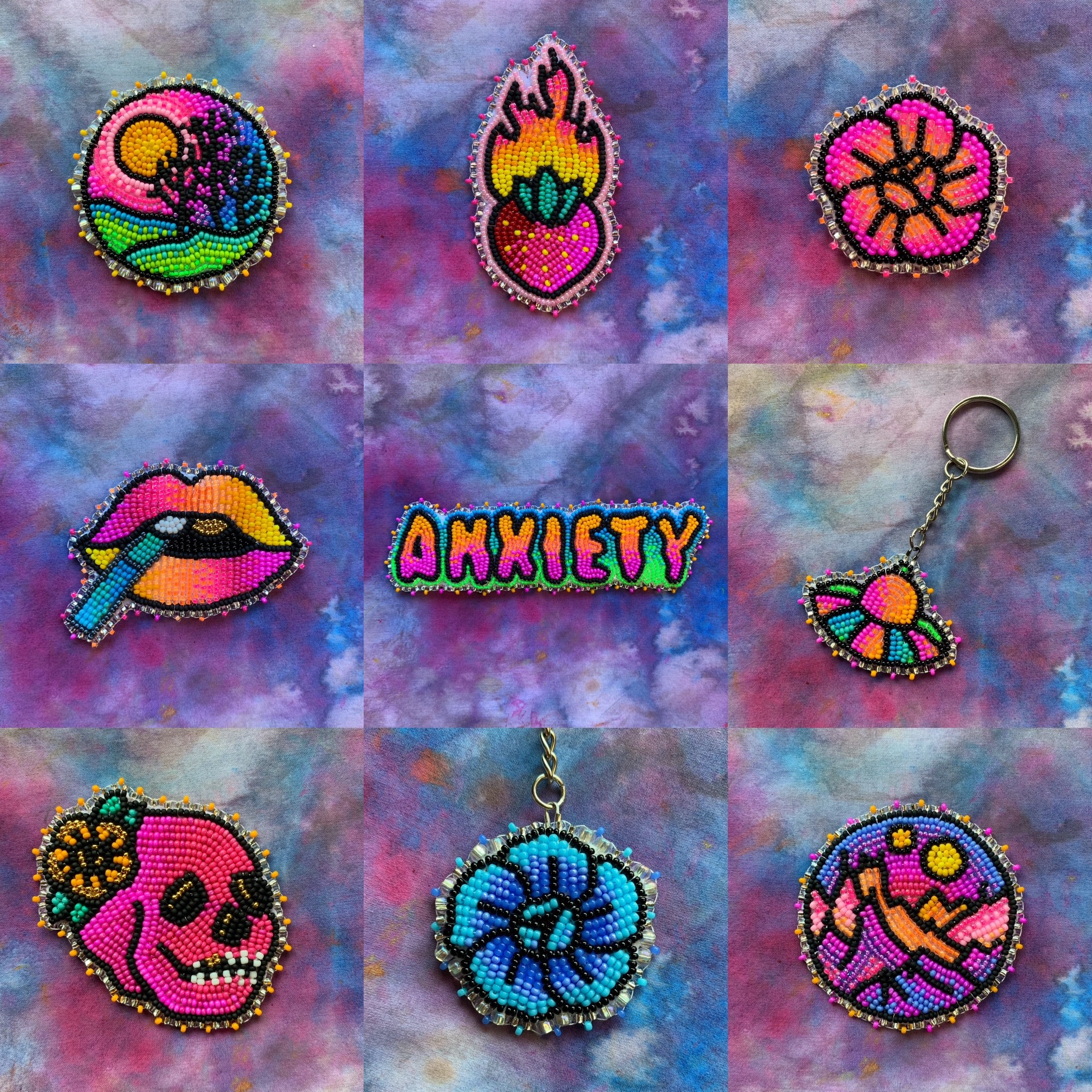
[back]
Exhibit 1 – Image 2
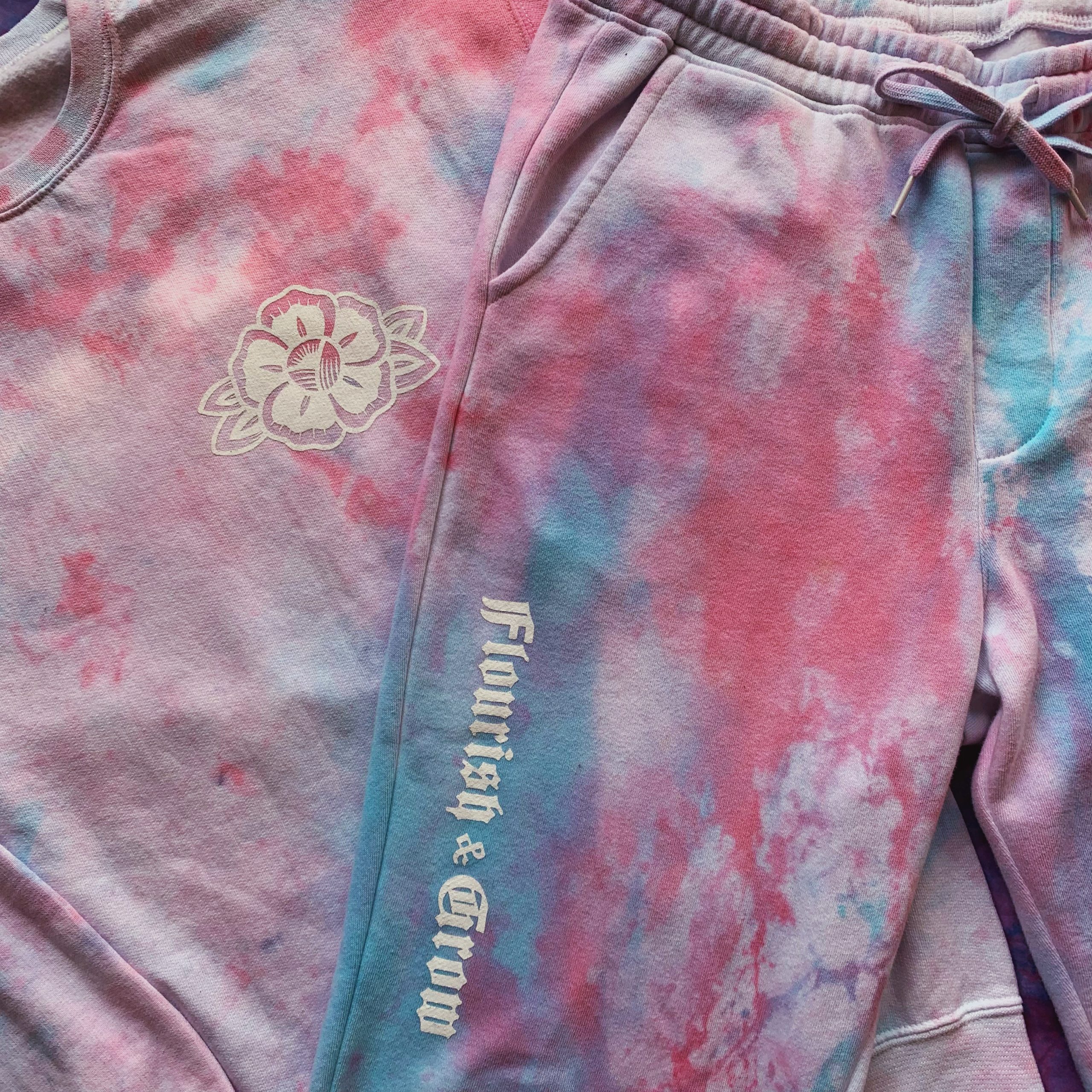
[back]
Exhibit 1 – Image 3
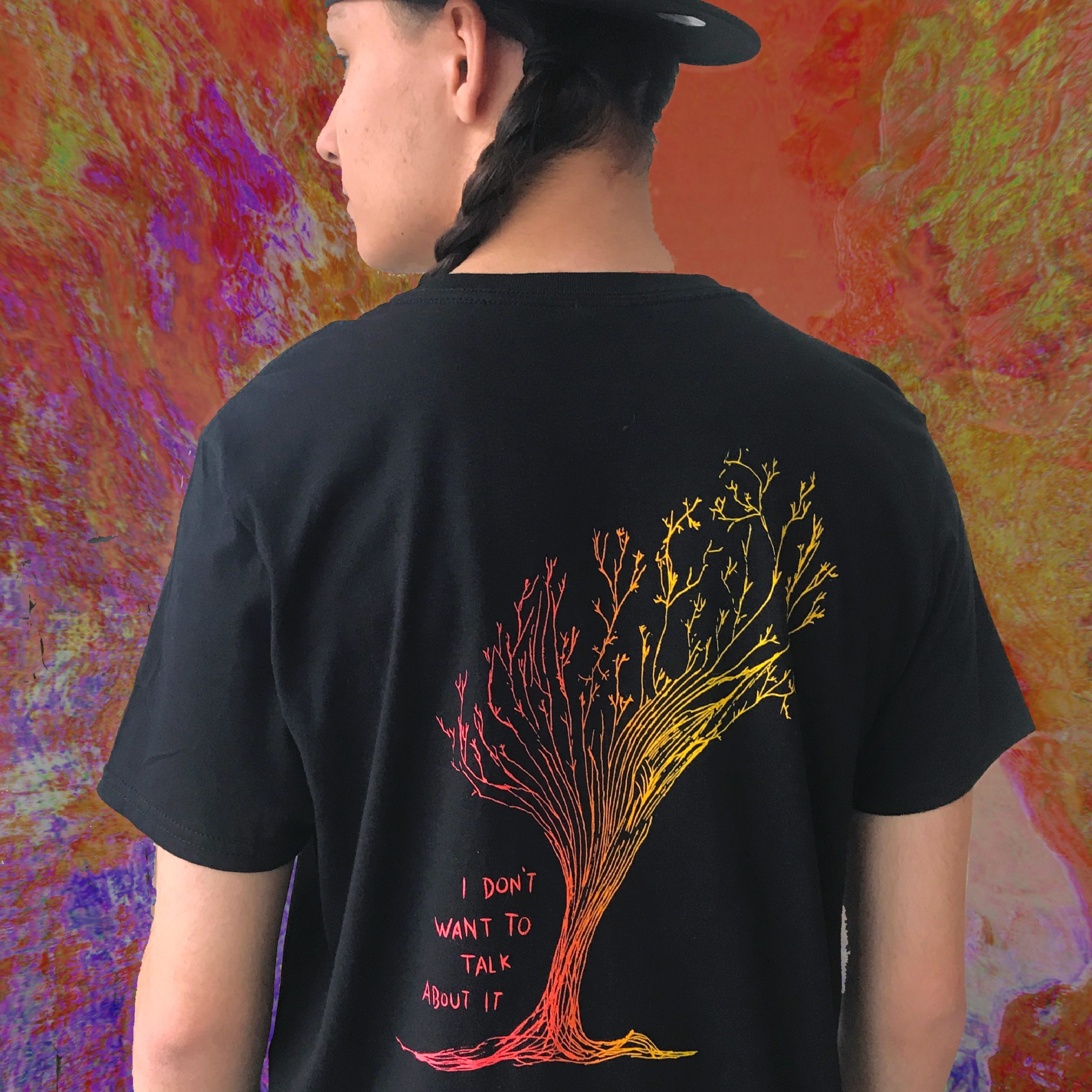
[back]
Exhibit 1 – Image 4
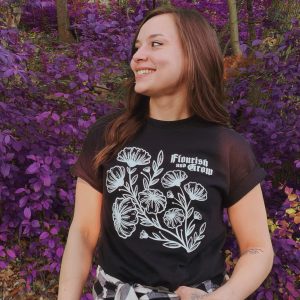
[back]
Exhibit 2 – Product Costing Information
Product Information
| Category | Item | Avg. Price | Raw Material Cost | Supply Cost | Time to Make |
|---|---|---|---|---|---|
| Clothing | Standard T-Shirt | $25 | $5 | / | 2 mins. |
| Clothing | Specialty T-Shirt | $30 | $5 | $5 | 10 mins. |
| Clothing | Long-sleeve T-shirt | $45 | $12 | / | 5 mins. |
| Clothing | Hoodie Sweatshirt | $75 | $21 | / | 5 mins. |
| Clothing | Sweatpants | $80 | $35 | / | 5 mins. |
| Clothing | Tank Top | $30 | $12 | / | 2 mins. |
| Beadwork | Diamond Beadwork | $110 | $10 | / | 3 hours |
| Beadwork | Regular Beadwork | $140 | $10 | / | 3 hours |
| Miscellaneous | Stickers | $4 | $0.50 | / | / |
| Miscellaneous | Patches | $8 | $1 | / | 2 mins. |
| Miscellaneous | Bandana | $15 | $3 | $3 | 2 mins. |
| Miscellaneous | Digital Print | $8 | $1 | / | 2 mins. |
[back]
Exhibit 3 – Sales Proportion Information
| Category | Proportion of Sales |
|---|---|
| Clothing | 60% |
| Beadwork | 30% |
| Miscellaneous | 10% |
[back]
Exhibit 4 – Pop-up Market Data
| Item | Data |
|---|---|
| Average length of time | 8 hours |
| Cost for booth | $50 to $100 |
| Foot traffic | 50 to 500 people |
| Conversion rate | 2% to 8% |
[back]
Image Descriptions
Exhibit 1 – Image 1
The image is a colourful collage featuring nine square sections, each depicting a unique beadwork design on a tie-dye background of blues, pinks, and purples.
- The top left section shows a circular beadwork piece resembling a sunset over hills, with vibrant greens, yellows, and purples.
- The top centre depicts a strawberry shape with a flame on top, featuring warm hues of pink, orange, and yellow.
- The top right design is a circular flower with pink petals outlined in black, against a pink background.
- The middle left section displays a pair of lips of yellow and pink beads and a blue straw between the lips.
- The middle centre is the word “ANXIETY” in bright pink and orange letters with green and blue outlines.
- The middle right features a keychain of a multicoloured UFO.
- The bottom left design shows a pink skull with a yellow flower on the side.
- The bottom center piece is a circular flower pattern of blue shades.
- The bottom right round beadwork illustrates a mountain scene in purples and pinks with a yellow moon or sun.
[back]
Exhibit 1 – Image 2
The image is a close-up of a tie-dye sweatshirt and sweatpants laid out side by side. The colour scheme includes a blend of light pink, blue, and purple hues, creating a cloudy, marble-like pattern. The sweatshirt displays a white outline of a flower on the left chest area. The sweatpants include a drawstring waist, and down the left leg, the words “Flourish & Grow” are printed in white in a decorative, Gothic-style font.
[back]
Exhibit 1 – Image 3
The image features a person from the back, with black hair in a braid, wearing a black T-shirt and a black hat. The background shows an abstract, multicoloured texture with vibrant tones of red, orange, and pink swirling together. On the back of the T-shirt, there is an illustration of a tree with branches that transition in colour from pinkish red on the left to yellow on the right. The tree appears stylized with intricate, thin branches reaching across the back of the shirt. Below the tree, the text “I DON’T WANT TO TALK ABOUT IT” is printed in pinkish-red block letters.
[back]
Exhibit 1 – Image 4
The image shows a young woman with long brown hair standing outdoors, surrounded by dense trees and purple foliage. She is smiling and looking to the left and wearing a black t-shirt featuring a design of white outlined flowers and leaves, along with the text “Flourish and Grow” in the upper right area of the shirt in Gothic-style text.
[back]
References
Both, M. (2022, September 22). Meet the Mi’kmaq artist designing orange shirts inspired by her heritage. CBC News.
Claire’s Stores. (n.d.). Our company’s stores. Claire’s Stores, Inc.
Grand View Research. (2022, July). GVR report cover beaded jewelry market size, share & trends report beaded jewelry market size, share & trends analysis report by product (necklaces, bracelets, rings, earrings), by material (plastic, glass, metal), by end-user (women, men), by distribution channel, by region, and segment forecasts, 2022 – 2030. Retrieved June 15, 2023, from https://www.grandviewresearch.com/industry-analysis/beaded-jewelry-market-report/toc
IMARC Group. (2023). North America handicrafts market: Industry trends, share, size, growth, opportunity and forecast 2023 – 2028. Research and Markets: The World’s Largest Market Research Store. Retrieved June 15, 2023, from https://www.researchandmarkets.com/reports/5769415/north-america-handicrafts-market-industry
Irvine, M. (2023, July 3). Facebook ad benchmarks for your industry [Data]. WordStream.
Khoma, A. (2022, December 29). Instagram ads cost in 2023. AdBraze.
Kim, L. (2023, November 13). What’s a good conversion rate? (It’s higher than you think). WordStream.
Leon, C. (2022, June 29). Expansive range of indigenous art, music highlighted during showcase: Indigenous solidarity is not just for one day. London Free Press.
Markwide Research. (2023, June). North America handicrafts market analysis − industry size, share, research report, insights, COVID-19 impact, statistics, trends, growth and forecast 2023 – 2030. Retrieved, June 15, 2023 from https://markwideresearch.com/north-america-handicrafts-market/
McKinnon, M. (2024, July 21). 2023 Report: Social media use in Canada (statistics). Online Business Canada.
Parisi, D. (2022, September 20). From Walmart to Galeries Lafayette: Inside Claire’s expansive retail strategy. Glossy.
Social responsibility. (n.d.). Ardene. Retrieved February 12, 2023, from https://ardenecorporate.com/social-responsibility
Who we are. (n.d.). Ardene. Retrieved February 12, 2023, from https://ardenecorporate.com/our-story
Download a PDF copy of this case [PDF].
Read the Instructor’s Manual Abstract for this case.
How to cite this case: Bloomfield, R. S., & Muraly, M. (2024). Flourish and grow. Open Access Teaching Case Journal, 2(2). https://doi.org/10.58067/s64m-x346
The Open Access Teaching Case Journal is a peer-reviewed, free to use, free to publish, open educational resource (OER) published with the support of the Conestoga College School of Business and the Case Research Development Program and is aligned with the school’s UN PRME objectives. Visit the OATCJ website [new tab] to learn more about how to submit a case or become a reviewer.
ISSN 2818-2030
- As quoted in Leon, 2022. ↵
- Both, 2022; Leon, 2022. ↵
- IMARC Group, 2023. ↵
- Markwide Research, 2023. ↵
- Grand View Research, 2022. ↵
- Claire’s Stores, n.d. ↵
- A concession model, also called a store-within-a-store setup, offers advantages to both retailers and brands. Retailers benefit from receiving rent or a commission based on in-store sales, while brands maintain control over the consumers’ product experience and gain access to the retailer’s foot traffic. ↵
- Parisi, 2022. ↵
- Claire’s Stores, n.d. ↵
- As per the Ardene Store Locator on February 12, 2023. ↵
- Who we are, n.d. ↵
- Social responsibility, n.d. ↵
- McKinnon, 2023. ↵
- Khoma, 2022. ↵
- Kim, 2023. ↵
- McKinnon, 2023. ↵
- Irvine, 2023 ↵
- As per the VistaPrint website on February 2, 2023. ↵


